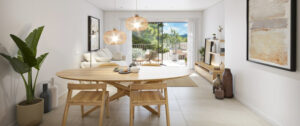LED Lighting in New Apartment Buildings and Its Impact on Sustainability
In today’s construction and energy efficiency landscape, LED lights with very low energy consumption have become an essential solution for new apartment buildings. This technology not only transforms how we illuminate our spaces but also plays a fundamental role in sustainability and long-term operational cost reduction. The widespread adoption of LED lighting in residential buildings not only enhances energy efficiency but also contributes to a more eco-friendly and economical environment.
LED lights, or Light Emitting Diodes, are distinguished by their exceptional efficiency compared to traditional light sources such as incandescent or halogen bulbs. They use significantly less energy to produce the same amount of light, resulting in a noticeable reduction in electrical consumption. This efficiency not only lowers electricity bills for residents but also reduces the demand on the power grid, which helps decrease greenhouse gas emissions associated with electricity generation.
Incorporating LED lights with very low energy consumption into new apartment buildings offers numerous benefits from a sustainability perspective. Firstly, their long lifespan means fewer replacements and less waste, minimizing the environmental impact associated with the production and disposal of bulbs. Unlike traditional bulbs, which may need to be replaced every few months or years, LED lights can last up to 25,000 hours or more. This not only reduces the frequency of replacements but also decreases the consumption of natural resources required to manufacture new bulbs and the energy needed for their transportation and disposal.
Additionally, LED technology allows for greater flexibility in lighting design. LED lights are available in a wide range of colors and light temperatures, making it easier to create customized and efficient lighting environments tailored to the specific needs of each space. This adaptability not only enhances the aesthetics and functionality of apartments but also allows for better optimization of both natural and artificial light, contributing to overall greater energy efficiency.
From an economic standpoint, the initial investment in LED lighting is quickly offset by savings in energy and maintenance costs. While LED lights may have a higher upfront cost compared to traditional bulbs, their durability and energy efficiency ensure a favorable return on investment over time. Apartment residents with LED lighting will experience a significant reduction in their electricity bills while enjoying a more comfortable and well-lit living environment.
In terms of regulatory compliance, the use of LED lights also facilitates adherence to increasingly stringent energy efficiency and sustainability standards. Building codes and government policies are evolving to promote the adoption of technologies that reduce energy consumption and environmental impact. Incorporating LED lights into the design of new apartments not only ensures compliance with current regulations but also prepares buildings for future regulations, avoiding costly adjustments and renovations.
LED lights with very low energy consumption are a key solution in new apartment construction, providing significant benefits in terms of energy efficiency, sustainability, and economic savings. Their widespread adoption contributes to a greener future by reducing energy consumption and waste, while also improving the quality of life for residents through more efficient and versatile lighting. In the pursuit of more sustainable and cost-effective buildings, LED lighting stands out as a smart and necessary investment for any modern construction project.
Some examples of Taylor Wimpey Spain properties with energy efficiency:
- San Telmo: https://catalog.taylorwimpeyspain.com/eclipse-san-telmo-es/
- La Mar: https://catalog.taylorwimpeyspain.com/la-mar-cala-dor-es/
- Breeze: https://catalog.taylorwimpeyspain.com/breeze-es/
- Mare: https://catalog.taylorwimpeyspain.com/mare-marbella-es/

Bright living room at the new Eclipse apartments